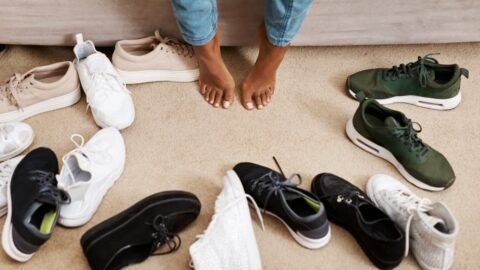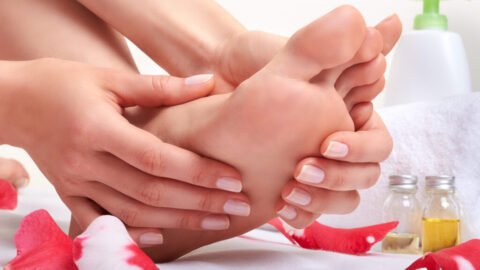Breaking In New Shoes: A Nurse’s Guide to Avoiding “Blisters and Discomfort”
Nurses are no strangers to the demands of long shifts on their feet, which makes the right footwear an essential tool of the trade. Breaking in new shoes can often lead to painful blisters and discomfort if not managed properly. This guide aims to provide practical strategies for healthcare professionals to avoid these common issues, ensuring a smoother transition to comfortable, well-fitted shoes that can withstand the rigors of the medical profession.
Finding the perfect shoes involves more than just aesthetics; it requires attention to fit, support, and the materials used in construction. Selecting footwear that offers ample cushioning and arch support can minimize the risk of foot pain, while opting for shoes made from breathable materials can help maintain foot hygiene and comfort throughout a nurse’s busy day. In addition, taking the time to gradually break in new shoes can prevent blisters and other forms of discomfort that come from wearing tight or poorly fitting shoes for extended periods.
Anatomy of a Shoe
In considering the construction of shoes, one must examine both the structural components and the materials used to understand their impact on comfort and durability.
Understanding Shoe Structure
The structure of a shoe can be broken down into several key components:
- Upper: The upper part of the shoe encases the foot and is often made of materials such as leather, mesh, or synthetic fabrics. Its function is to provide stability and protection.
- Insole: Positioned inside the shoe, the insole is the cushioned layer that sits directly beneath the foot, offering support and comfort.
- Midsole: The midsole is found between the insole and outsole, typically providing shock absorption and cushioning. It is often made of foam materials, such as EVA (ethylene-vinyl acetate).
- Outsole: Made from rubber or synthetic materials, the outsole is the bottom part of the shoe that comes into contact with the ground. Its texture and pattern affect grip and traction.
- Heel: The heel is the rear part of the shoe that provides elevation. The design and height of the heel can vary, influencing the shoe’s balance and the wearer’s posture.
- Toe Box: The front of the shoe that provides space for the toes. The form and spaciousness of the toe box are essential for comfort and movement.
Materials and Their Properties
The materials used in shoe fabrication directly affect their function and comfort:
- Leather: Leather is prized for durability and a snug fit that molds to the wearer’s foot shape. It is also breathable and flexible.
- Synthetics: Synthetic materials, such as polyester or nylon, are commonly used due to their light weight and moisture-wicking properties.
- Rubber: Often used for outsoles, rubber provides excellent grip and is durable against wear and tear.
- Textiles: Fabrics like canvas and cotton add softness and flexibility to the upper part but may provide less support than leather or synthetic materials.
- Foam: Midsoles often incorporate foam for its cushioning properties. EVA foam, in particular, offers lightweight shock absorption.
Preparations Before Wearing New Shoes

Properly preparing new shoes before wearing them for the first time is critical for nurses, who spend many hours on their feet. This section will outline how to measure and fit shoes correctly and choose the right socks to minimize the risk of blisters and discomfort.
Proper Measuring and Fitting
One should always ensure that new shoes are the right size by measuring both feet’s length and width. Shoes should fit snugly but not tightly, leaving about a thumb’s width between the front of the shoe and the longest toe. It is also important to try on shoes later in the day when feet are more likely to be swollen to get a realistic sense of fit.
Choosing the Right Socks
The choice of socks plays a pivotal role in preventing blisters. Nurses should opt for moisture-wicking material to keep feet dry and reduce friction. Socks should fit well without bunching, as excess material can cause pressure points and irritation inside the shoe.
The Break-In Process
The break-in process is essential for new footwear to adapt comfortably to an individual’s feet. A nurse’s work routine demands extended periods on their feet, making it crucial to prevent blisters and discomfort.
Gradual Increase of Wearing Time
A Nurse should start by wearing new shoes for short durations. They might begin with:
- Day 1-2: 1-2 hours
- Day 3-4: 2-4 hours
- Thereafter: Increase by 1 hour each day
This gradual increase allows the feet and shoes to get accustomed to each other, reducing the risk of painful friction and the formation of blisters.
Shoe Stretching Techniques
Nurses can employ specific shoe stretching techniques to help mold their footwear more comfortably to their feet. These can include:
- Thick Socks: Wearing them with new shoes at home to gently stretch the material.
- Shoe Stretchers: Inserting these devices overnight can help expand tight spots.
- Conditioning Products: Applying a conditioner to leather shoes softens and stretches the material.
Each technique can be applied based on the shoe material and the areas needing adjustment.
Caring for Your Feet
In the demanding field of nursing, proper foot care is crucial for maintaining comfort during long shifts. Attention to hygiene and moisture control, along with the selection of appropriate foot care products, are essential steps a nurse can take to prevent foot-related issues.
Hygiene and Moisture Control
Good foot hygiene is a cornerstone of foot care. Nurses should regularly wash their feet with soap and water to remove bacteria and reduce odor. Thorough drying, particularly between the toes, is necessary to prevent fungal infections. Moisture-wicking socks, which can be found in recommendations for comfortable footwear for nurses, support this by keeping feet dry throughout the day. It’s also beneficial to have an extra pair of socks to change into during long shifts to ensure feet stay fresh and dry.
Selecting Foot Care Products
Choosing the right foot care products is essential for preventing blisters and managing discomfort. Look for creams and powders designed for foot care, as they are specifically formulated to handle the stress feet endure. A quality foot cream should be non-greasy and have ingredients that can help with hydration and repair. Insoles with cushioning and proper arch support are also significant, and they should match the nurse’s foot shape and shoe design. For shoes with a wider toe box, this can significantly reduce the risk of blisters and other forms of discomfort, as highlighted in guidelines on the best shoes for nurses.
Protective Measures for Feet
In the realm of foot protection, especially in professions that require extended periods of standing and walking such as nursing, it’s vital to equip oneself with the right gear. Protective measures can significantly reduce the risk of developing blisters and general foot discomfort.
Using Protective Pads and Inserts
Utilizing protective pads and gel inserts can mitigate pressure points inside shoes, which in turn can prevent blisters. They provide cushioning and support, especially in areas prone to friction. For example, nurses should consider:
- Metatarsal pads: These assist in off-loading pressure from the ball of the foot.
- Heel liners: These can prevent slippage and the blisters that result from friction.
Applying Tapes and Bandages
Tapes and bandages are simple yet effective tools in a nurse’s arsenal for protecting the skin on their feet. Strategic application can make a substantial difference:
- Athletic tape: Good for areas that experience high friction and need support to prevent blisters.
- Hydrocolloid bandages: These bandages are adept at providing a second skin-like barrier while also promoting healing of any pre-existing blisters. They absorb excess moisture and can stay in place for several days if necessary.
Common Missteps and Solutions
When nurses acquire new footwear, they often encounter issues that can cause discomfort or lead to blisters. The following subsections detail how to recognize when shoes might not be the right fit and the steps to take to remedy common problems.
Identifying Poor Fit and Design Flaws
Poor Fit:
- Heel Slippage: If the heel moves a lot, blisters can form due to friction.
- Toe Pinching: Tight toe boxes cause discomfort and can result in bruised toenails.
Design Flaws:
- Insufficient Support: Shoes lacking adequate arch support can lead to foot fatigue.
- Non-Breathable Materials: Footwear made from non-breathable materials may increase sweating, leading to blisters and skin irritation.
One should ensure a snug, yet comfortable, fit across the entirety of the foot and opt for shoes designed with breathable materials and proper support.
Remedial Actions for Shoe-related Issues
Solutions for Poor Fit:
- Inserts and Pads: Use gel inserts or padded socks for cushioning and improved fit.
- Lacing Techniques: Employ alternate lacing methods to secure the foot and minimize movement inside the shoe.
Handling Design Flaws:
- Custom Orthotics: Consider custom orthotics for enhanced arch support tailored to individual needs.
- Material Choices: Select shoes with breathable fabric to reduce the risk of overheating and moisture accumulation.
By addressing these issues early on, nurses can mitigate foot discomfort and focus on their important duties.
Walking Techniques and Posture
Breaking in new shoes is vital for nurses to maintain foot health and avoid blisters and discomfort. Proper walking mechanics and correct posture play a crucial role in this process.
Proper Walking Mechanics
When nurses walk, each step should start with the heel making contact with the ground, rolling through the foot, and pushing off with the toes. This heel-to-toe movement should be smooth to reduce the stress on the feet.
- Heel Strike: Begin the step with the heel.
- Midstance: Roll through the foot.
- Toe-Off: Propel forward with your toes.
It’s essential to ensure that the shoes provide adequately arch support, enabling natural foot movement and reducing strain.
Postural Tips for Prolonged Standing
For nurses who stand for extended periods, maintaining a neutral spine is critical to avoid discomfort. They should keep their body’s weight evenly distributed on both feet and avoid locking their knees.
- Weight Distribution: Stand with weight evenly across both feet.
- Knee Position: Slightly bend the knees to reduce pressure.
Practicing proper walking techniques not only helps to break in shoes but also contributes to overall foot health and reduces workplace fatigue.
Treatments for Blister Prevention

Proper blister prevention can save nurses long shifts of discomfort and pain. Below are targeted strategies to keep feet blister-free, from natural methods to reliable over-the-counter products.
Natural Remedies and Soaks
Individuals may find soaking their feet in warm water with Epsom salt to soften skin and prevent blisters beneficial. Adding a few drops of essential oils like tea tree or lavender can also have soothing and antimicrobial effects. After soaks, drying the feet thoroughly and applying aloe vera can help keep hydration levels balanced without becoming overly moist.
Over-the-Counter Options
For more immediate results, various over-the-counter options are available. Hydrocolloid bandages are ideal for hotspot areas, providing a protective cushion. Anti-chafing balms and specialized blister prevention tapes can be applied before wearing shoes. Additionally, using powders or antiperspirant on feet can reduce moisture buildup, a common cause of blister formation.
When to Replace Your Shoes
Choosing the right time to replace nursing shoes is crucial to maintain foot health and comfort. Nurses spend long hours on their feet, making footwear a pivotal aspect of their daily comfort and support.
Signs of Wear and Tear
- Outsole Wear: Look for patterns of wear, such as erosion of the tread, which can lead to slips and falls. Once the tread is significantly worn, it’s time to consider new shoes.
- Insole Compression: If the insole no longer provides cushioning and the shape of the foot is visibly imprinted, this is a sign the shoes are no longer providing adequate support.
- Material Damage: Check for any tears or breakdowns in the shoe’s material, especially in areas of high flexion. Damages here can contribute to the development of blisters and discomfort.
Guidelines for Shoe Lifespan
- Mileage Tracking: Nurses should replace their shoes approximately every 300-500 miles, as the shoes lose shock absorption over time.
- Time Frame: Typically, with regular usage, shoes have a lifespan of about 6-12 months.
- Professional Assessment: Seeking advice from a footwear specialist can provide insights into whether the time has come to replace the shoes based on the unique wear patterns.
Additional Resources
This section provides a curated list of reading materials and avenues for professional guidance to further assist nurses in selecting and breaking in new shoes that prevent blisters and discomfort.
Recommended Reading
- Articles for Best Practices: For an in-depth guide on finding shoes that make a style statement while also being practical for work, one resource is the blog post on Finding the Perfect Shoes. It offers tips that blend fashion with comfort for those who are on their feet all day.
- Preventing Common Issues: Nurses can learn how having a roomier toe box in shoes can alleviate pressure on the little toe, preventing blisters and improving overall foot comfort.
Professional Assistance and Advice
- Podiatrists: For personalized advice, a consultation with a podiatrist can provide tailored recommendations based on individual foot shape and gait analysis.
- Orthopedic Specialists: Nurses may seek out specialists who can assist with custom orthotics that fit perfectly into the shoe, ensuring maximum comfort during long shifts.









[…] Understanding Foot Fatigue […]
[…] often endure long hours on their feet, leading to discomfort and soreness. Maintaining foot health is crucial for their wellbeing and […]
[…] the demanding nature of our profession. This means adopting a routine that safeguards against the common foot problems that most nurses often […]
[…] and comfort to manage the long hours spent on our feet. Nurses with flat feet often experience pain and discomfort due to the lack of natural arch support, making proper footwear selection not just a matter of […]